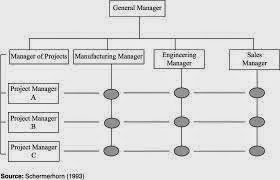TYPES OF QUALITY MANAGEMENT SYSTEM
1. ISO
9000
ISO
9000 is series of standards that outlines the requirements for quality
management system (QMS). It is a purposeful effort to promote worldwide
standards of products that will.
Ø Improve operating efficiency
Ø Improve productivity
Ø Reduce costs
The
extended version of ISO is International Organization for Standardization,
which is identified as an organization for measuring internationally accepted
standard for quality. The work of ISO is conducted by around 180 technical
committees. It is the work of the quality management and quality assurance
committee.
There
are essentially 5 standard associated with the ISO 9000 series. They are
ISO 9000
ISO 9001
ISO 9002
ISO 9003 and
ISO 9004
v ISO 9000 is the set of guidelines for the:
a) Selection and use of standards
b) ISO 9001
c) ISO 9002 and
d) ISO 9003
v ISO 9001 describes about the “DDPIS” of products or services to
ensure the quality.
D = Design
D = Development
P = Production
I = Installation
S = Servicing
v ISO 9002 describes about the “PIS” of products and services to
ensure quality. In includes the design and development of products& services.
P = Production
I = Installation
S = Servicing
v ISO 9003 describes about the final inspection and test of goods
and services regarding distributors or value added contractors.
v ISO 9004 describes about the guide lines for the application of
the elements of quality management system (QMS). It is used for internal
reporting.
The ISO certified company holds the good image in the eye
of public in Nepal ISO certificates are valid for three years only. Nepal
Tilganga Eye Hospital has got ISO 9000, then automatically it has ISO 9001, ISO
9002, ISO 9003 and ISO 9004.
Finally, the ISO
9000family addresses "Quality
management". This means what the organization does to fulfill:
§ the customer's quality requirements,
§ applicable regulatory requirements,
§ enhance customer satisfaction, and
§ achieve continual improvement of its performance in pursuit
of these objectives.
2. ISO 14000
ISO 14000 series is the work for an environment management
system. The ISO 14000 documentation standards require to keep track of raw
materials use and their generation, treatment and disposal of wastage for
participating companies. The effort of participating companies to meet ISO
14000 standards, Ensures the environmental determination is fully controlled.
The companies are forced to prepare plan for ongoing improvement in their
environmental performance.
ISO
14000 series involves following four areas of environmental standards.
1) Environmental Management system.
2) Environmental performance Evaluation
3) Environment labeling
4) Life cycle assessment.


Comments